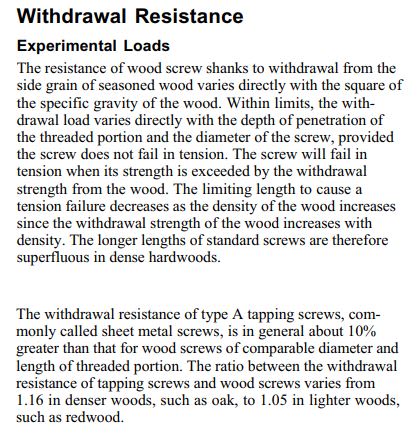Ron247
Structural
- Jan 18, 2019
- 1,146
Does anyone have a reference or source for the allowed tension for Lag screws and Wood screws? I can easily find shear values and pullout values based on inches of thread into the wood but I have never seen any reference for just tension across the area. The other value that is hard to find is pulling the head through the wood. By my thinking, the pullout per inch of thread into wood is somewhat useless without having an allowed net tension and an allowed value for pulling the fastener head through the wood.
I cannot find any allowed stresses or loads for just tension. I also do not see any material specifications that list these values. I do not see anything in the NDS about this. Any help would be appreciated.
I cannot find any allowed stresses or loads for just tension. I also do not see any material specifications that list these values. I do not see anything in the NDS about this. Any help would be appreciated.

